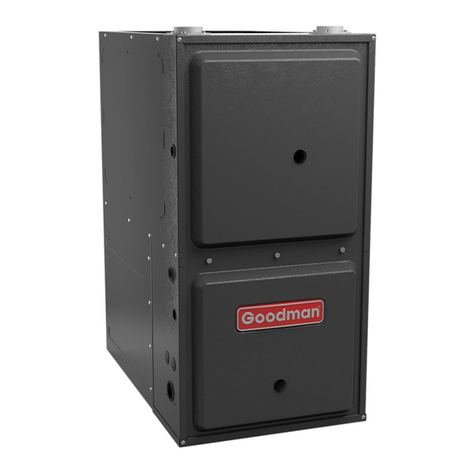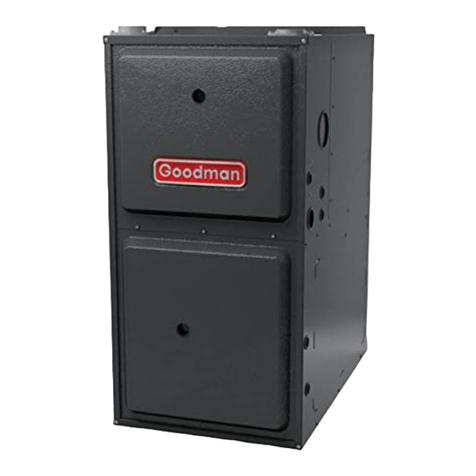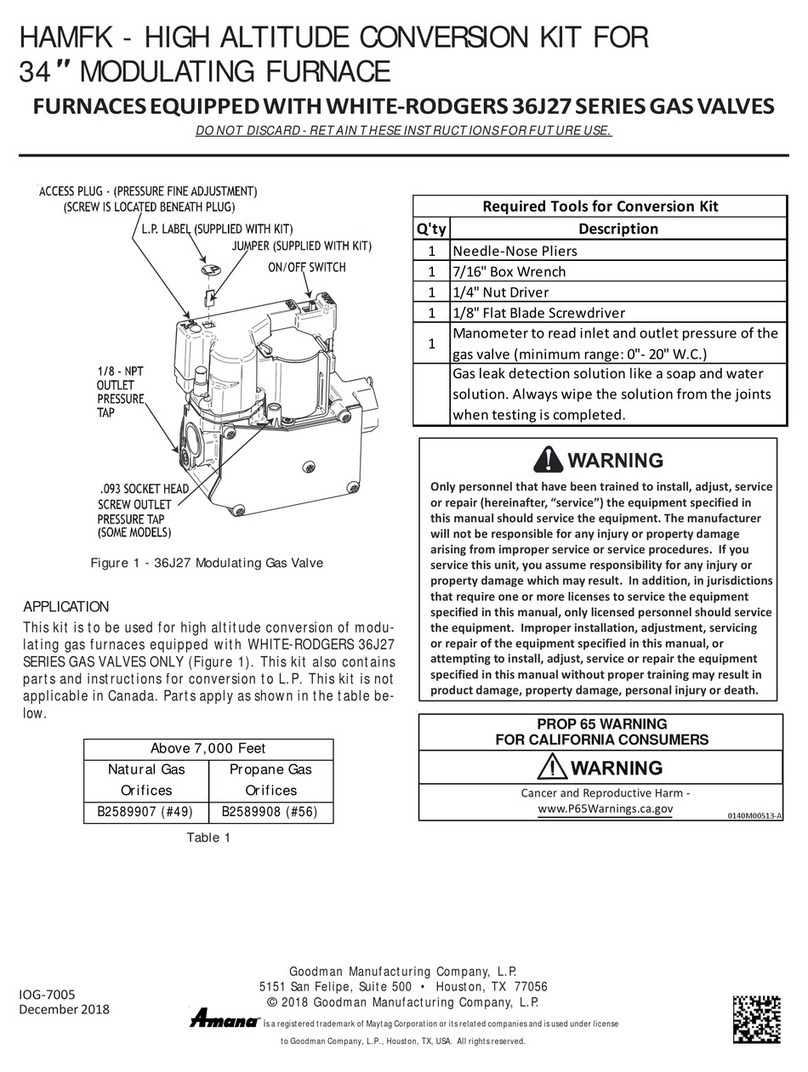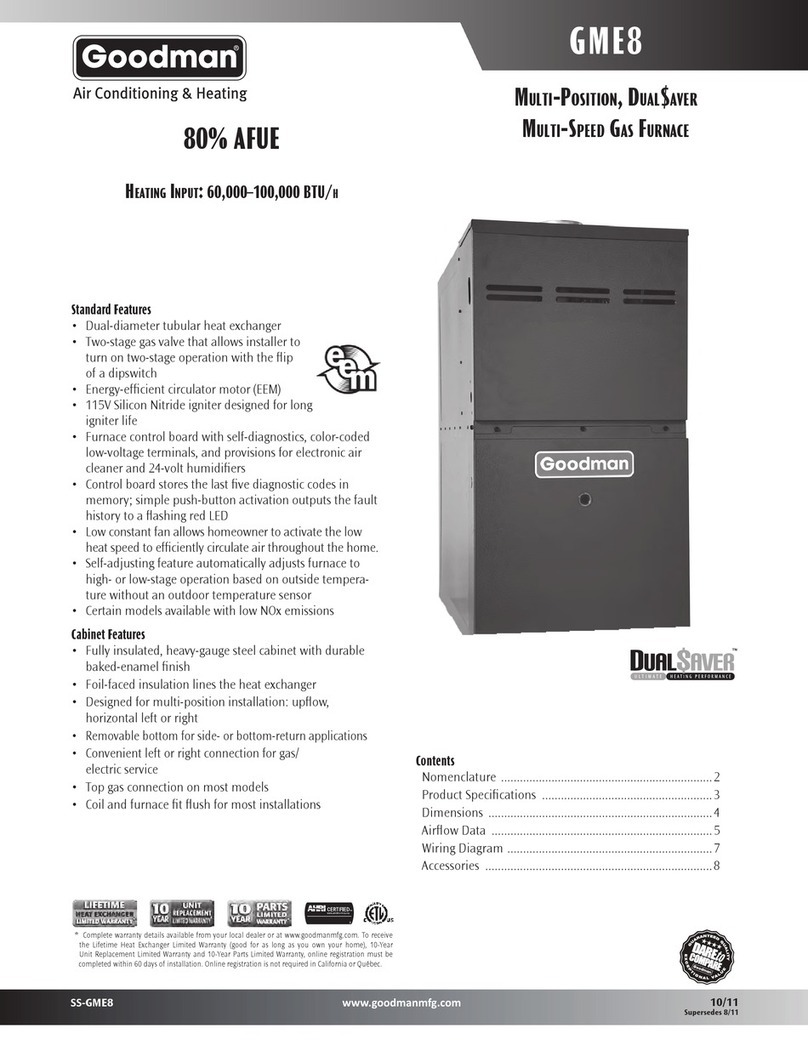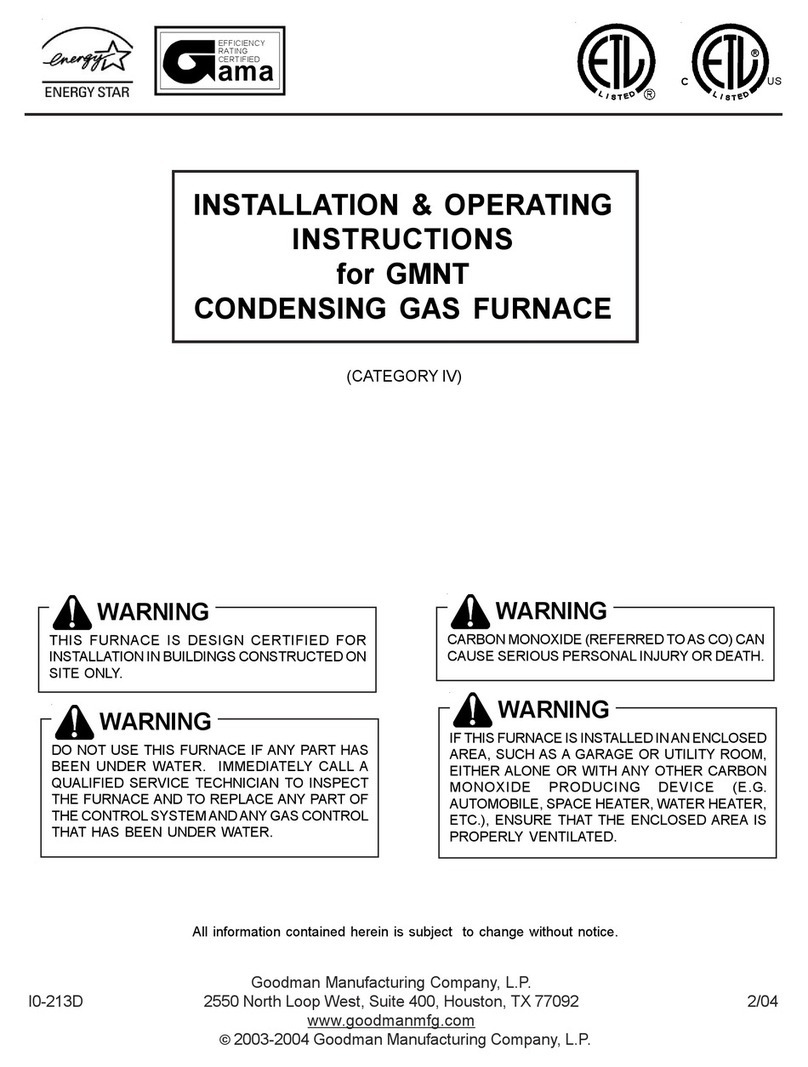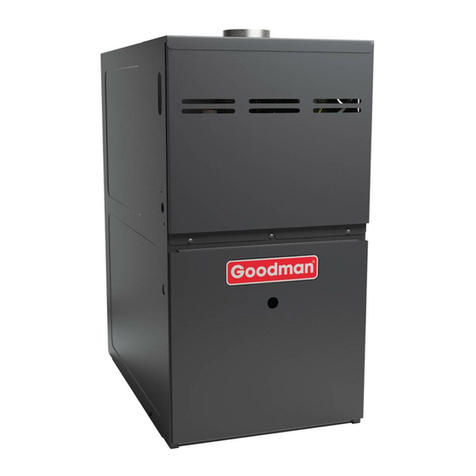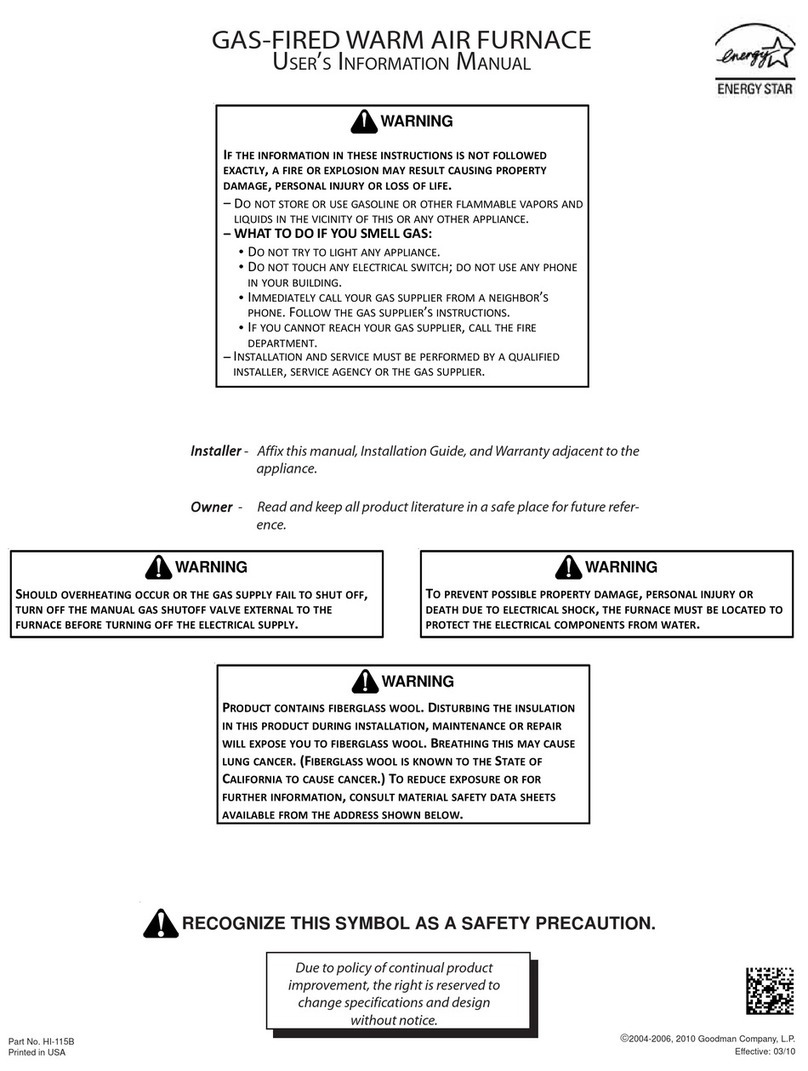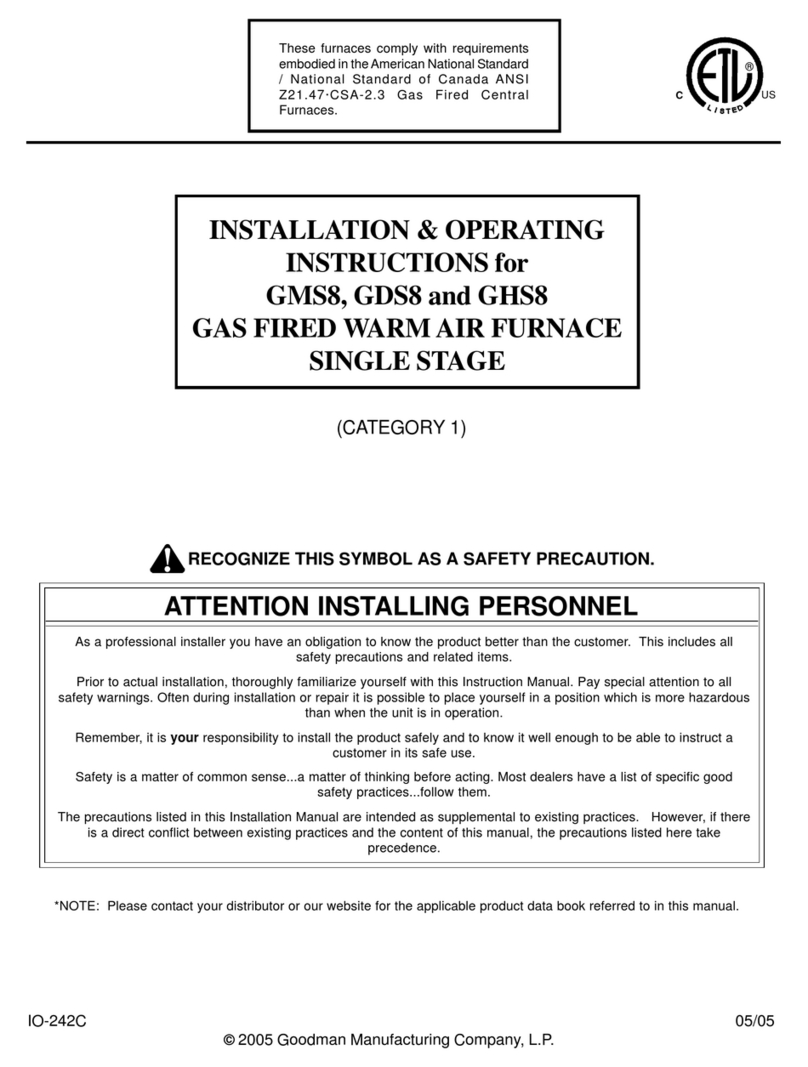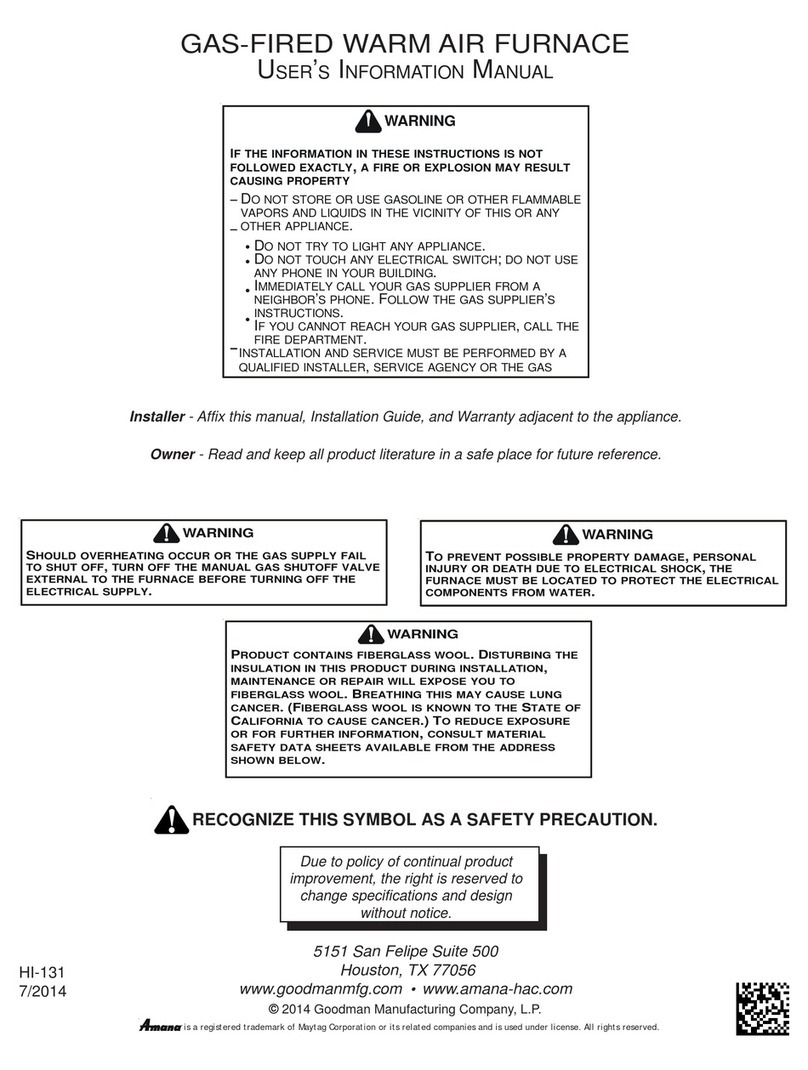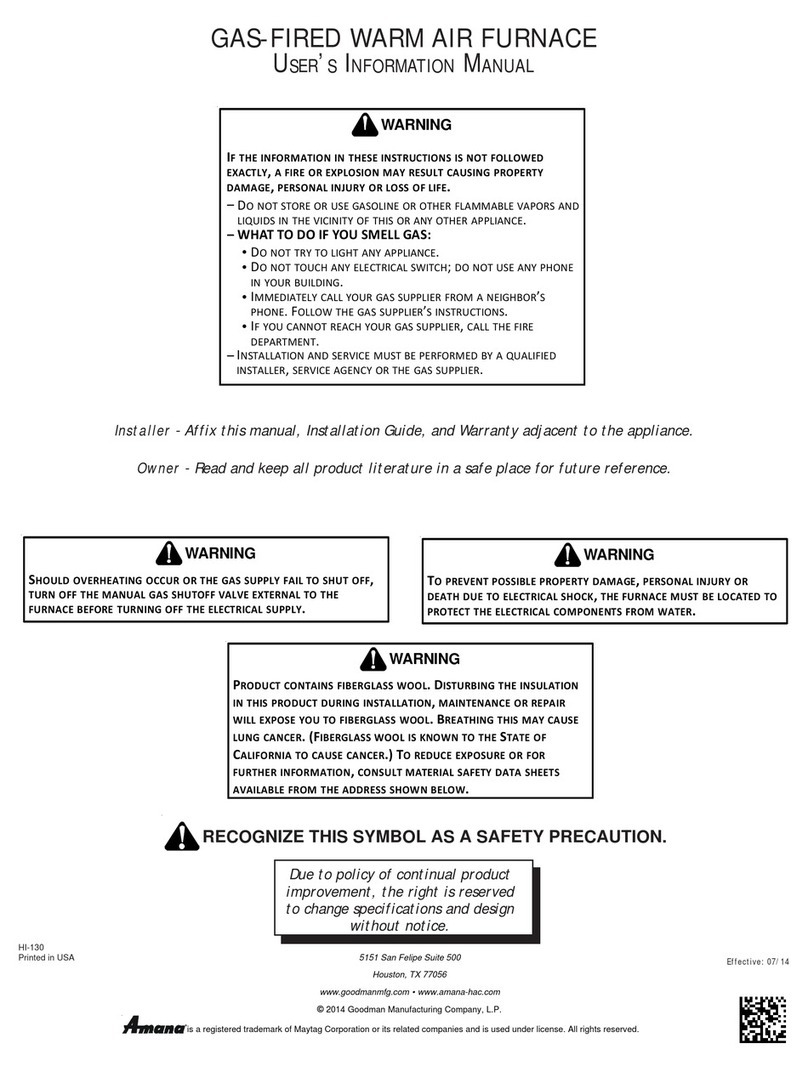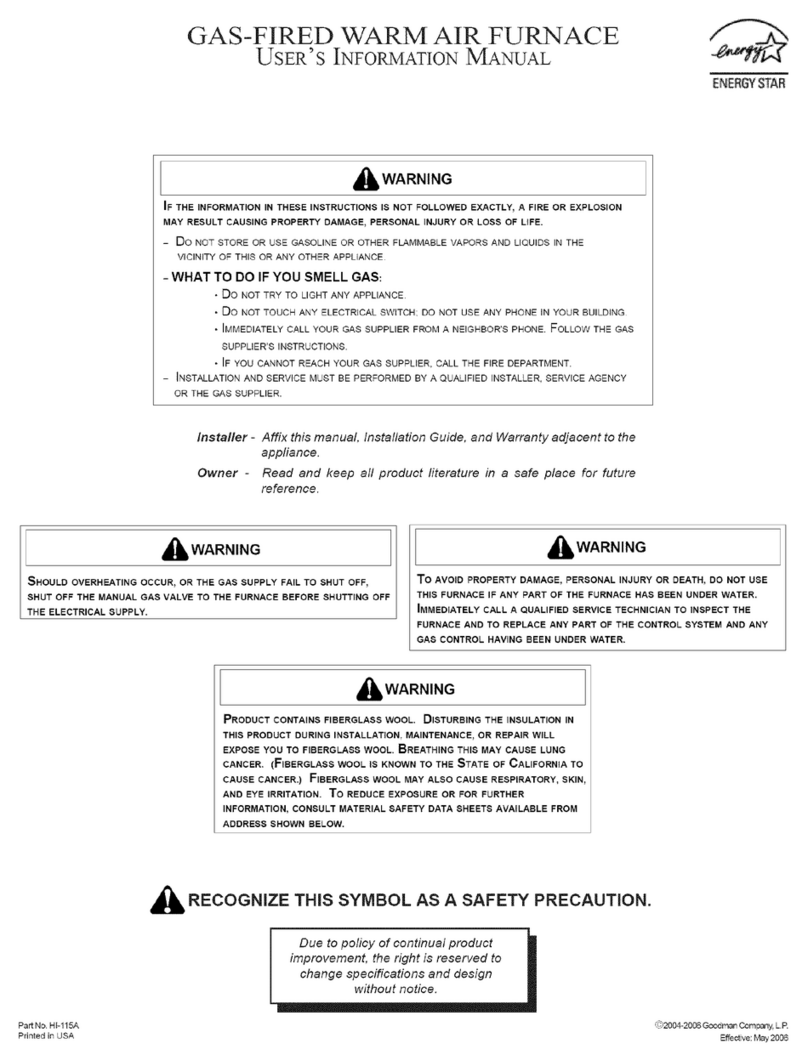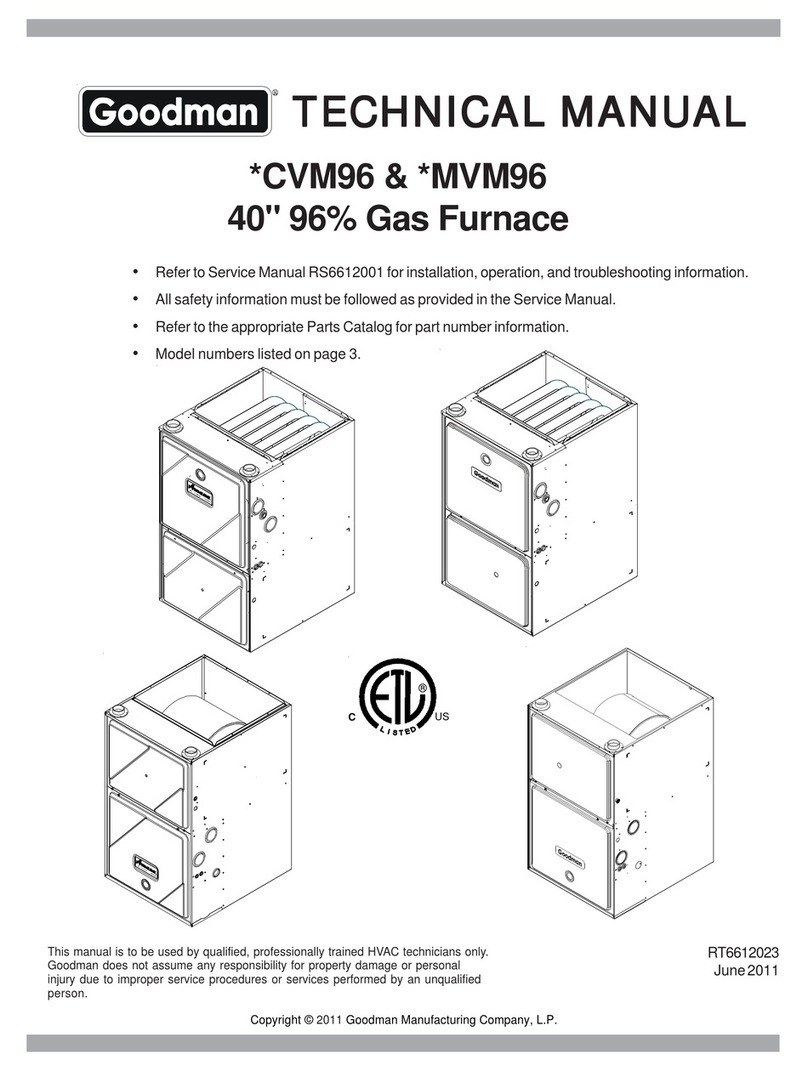
9
P
RODUCT
A
PPLICATION
• Returnairductsareprovidedandsealedtothefurnace.
• A return air temperature range between 60ºF (16ºC)
and80ºF(27ºC)ismaintained.
• Air filters are installed in the system and maintained
during construction, replaced as appropriate during
construction,and uponcompletionof constructionare
replaced.
• The input rate and temperature rise are set per the
furnace ratingplate.
• 100% outside air is provided for combustion air
requirementsduring construction.Temporaryducting
can be used.
NOTE: Do not connect the temporary duct directly to
the furnace. The duct must be sized according to the
instructions under Combustion and Ventilation Air
Requirements,Section5.3.3.
•The furnace heat exchanger, components, duct
system,airfilters and evaporator coils are thoroughly
cleanedfollowingfinal construction clean up.
• Allfurnaceoperatingconditions(includingignition,input
rate, temperature rise and venting) are verified
according to these installation instructions.
NOTE: TheCommonwealthofMassachusettsrequiresthatthe
followingadditionalrequirementsmustalsobemet:
• Gasfurnaces must beinstalledbya licensed plumber
orgas fitter.
• AT-handle gas cock must be used.
• Ifthe unit is to beinstalledinan attic, the passageway
to and the service area around the unit must have
flooring.
T
O
PREVENT
PROPERTY
DAMAGE
,
PERSONAL
INJURY
OR
DEATH
DUE
TO
FIRE
,
DO
NOT
INSTALL
THIS
FURNACE
IN
A
MOBILE
HOME
,
TRAILER
,
OR
RECREATIONAL
VEHICLE
.
WARNING
To ensure proper furnace operation, install, operate and
maintain the furnace in accordance with these installa-
tion and operation instructions, all local building codes
and ordinances. In their absence, follow the latest edition of
the National Fuel Gas Code (NFPA 54/ANSI Z223.1), and/or
CAN/CSA B149 Installation Codes, local plumbing or waste
watercodes,andotherapplicablecodes.
Acopy oftheNationalFuel Gas Code (NFPA54/ANSIZ223.1)
canbeobtainedfromanyofthefollowing:
American National Standards Institute
1430Broadway
New York, NY 10018
National Fire Protection Association
1 Batterymarch Park
Quincy, MA 02269
CSA International
8501 East Pleasant Valley
Cleveland,OH44131
To register your Goodman brand unit, go to
www.goodmanmfg.com. Click on theword“Warranty”located
on the left side of the home page. Next, click on the word
“Product Registration” located on the left side of the Warranty
page and complete the forms in the manner indicated on the
ProductRegistration page.
Toregister yourAmanabrand unit,go towww.amana-hac.com.
Click on the word “Warranty” located on the top right of the
home page. Next, click on the word “Product Registration”
locatedonthe left side of the Warranty page andcompletethe
formsinthemannerindicatedon theProductRegistrationpage.
Productlimitedwarrantycertificates formodelscurrentlyinpro-
ductioncanbeviewedatwww.goodmanmfg.comorwww.amana-
hac.com. If your model is not currently in production or does
not appear on the website, please contact your installing con-
tractoror contact customer service (877-254-4729)toobtaina
copyofyourwarranty certificate.
Eachproduct overview pagecontainsa Product Warranty link;
by clicking on it you will be able to view the limited warranty
coverageforthatspecific product.To viewwarranty registration
information,click on the Product Warranty textontheleftnavi-
gation panel on the home page of each website. The Online
Product Registration pages are located in this same section.
P
RODUCT
A
PPLICATION
Thisfurnace is primarilydesignedfor residential home-heating
applications. It is NOT designed or certified for use in mobile
homes,trailersorrecreationalvehicles. Neitherisitdesigned
or certified for outdoor applications. The furnace must be in-
stalled indoors (i.e., attic space, crawl space, or garage area
providedthe garage area is enclosedwithanoperating door).
This furnace can be used in the following non-industrial com-
mercialapplications:
Schools,Officebuildings,Churches,Retailstores,
Nursinghomes,Hotels/motels,Commonorofficeareas
In such applications , the furnace must be installed with the
followingstipulations:
• It must be installed per the installation instructions
providedand per local and nationalcodes.
• It must be installed indoors in a building constructed
on site.
• It must be part of a ducted system and not used in a
freeair deliveryapplication.
• It must not be used as a “make-up” air unit.
• All other warranty exclusions and restrictions apply.
Thisfurnacemaybe used as a construction site heater ONLY
ifthefollowingconditions are met:
• The vent system is permanently installed per these
installation instructions.
• Aroomthermostat isusedtocontrolthefurnace.Fixed
jumpersthat provide continuousheatingCANNOT be
used.
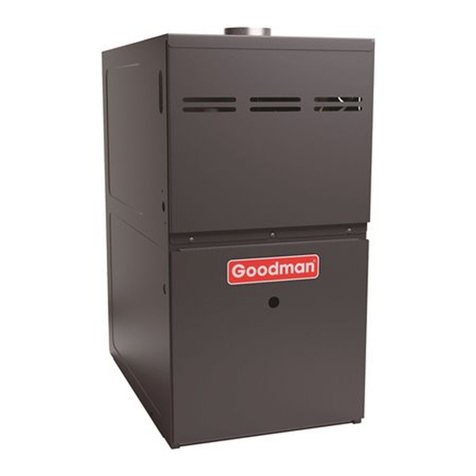
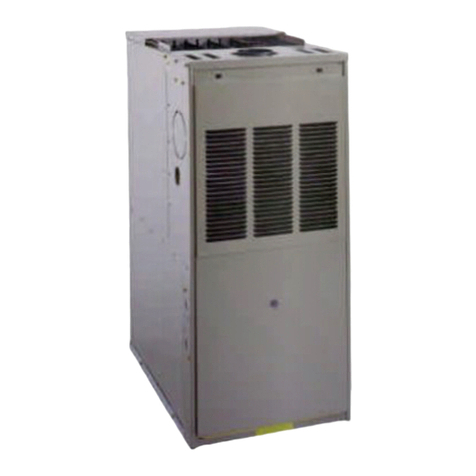
![Goodman [A/G]PG Operating instructions Goodman [A/G]PG Operating instructions](/data/manuals/19/o/19o17/sources/goodman-a-g-pg-manual.jpg)
